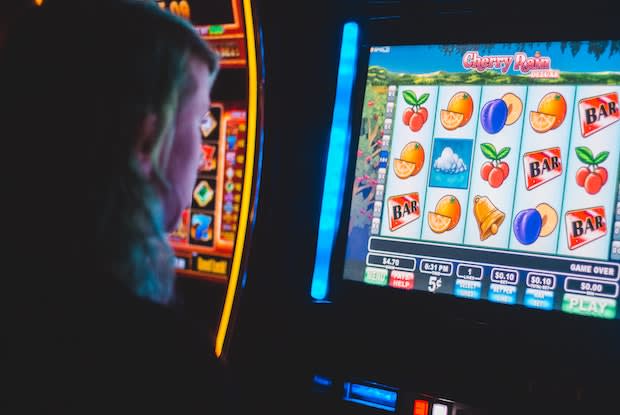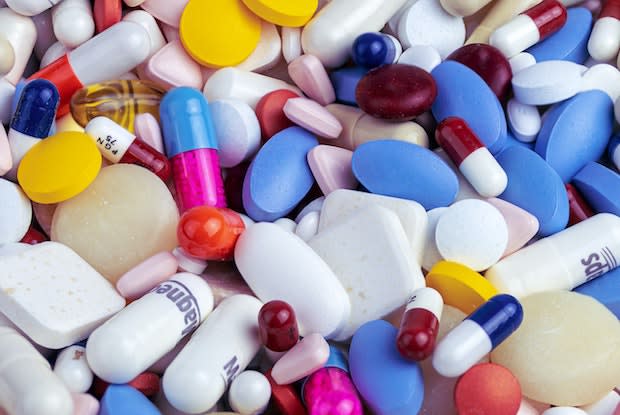Table of Contents
III. Differences between Bipolar I & II
IV. Treatments for Bipolar Disorder
Bipolar Overview
Bipolar disorder is a serious mental illness that causes extreme changes in a person’s mood, behavior and energy. Bipolar disorder was previously known as manic depression. Some people alternate between periods of mania and depression. Most people that suffer from bipolar are depressed more than they are manic. [1]
Bipolar disorder affects almost one percent of Americans. It typically begins during adolescence, although it may start as late as your fifties. It is vital to seek treatment if you believe you or someone you know may have bipolar disorder. Medications like Wellbutrin can help keep symptoms under control. Between 15-17 percent of sufferers take their own lives compared with just one percent of the general population. [2]
Bipolar disorder can be very difficult to diagnose as periods of mania or depression can last weeks or months or may change frequently. Periods of mania may result in the person being energetic, reckless or euphoric. Depression describes the opposite mood when someone has a loss of pleasure, energy or a sense of worthlessness. [3] Unlike ordinary mood swings, bipolar cycles are so intense that they can disrupt your ability to function in daily life. [1]

Although doctors do not completely understand the causes of bipolar disorder, it often runs in families. Researchers believe that the unusual functioning of brain circuits and the natural chemical serotonin may contribute to depression and bipolar disorder. Researchers believe that genes are not the only cause of bipolar disorder as not everyone with the genes develops the illness. There is also evidence that lifestyle and the environment can also affect the severity of the disorder. [4] Common triggers are sudden or stressful life events, sleep deprivation, medications or substance abuse. Even uncontrollable factors like season changes can be a trigger. Depressive periods are more likely to overlap with fall or winter. [1]
Signs of being bipolar
Bipolar disorder is one of the most difficult mental illnesses for families to accept. There are several different types of bipolar disorder ranging from mild to severe. Typically, the first manic or depressive episode of bipolar disorder happens during adolescence. [1] Some people alternate between episodes of mania and depression while other people are more prone to one than the other.
On average, people with bipolar disorder suffer four episodes of mania or depression during the first ten years of their illness. Women are more likely to start with an episode of depression, while men usually start with a manic episode. [2] Psychosis can occur during both the manic and depressive periods of bipolar. Since bipolar disorder can worsen without treatment, you should know the symptoms to look for.
a. Mania
Mania describes periods where someone with bipolar disorder feels increasingly reckless, talkative, energetic, commanding or euphoric. Often, manic periods can be very productive.
However, this mood of happiness can turn into something less joyful, showing signs of confusion, irritation or anger. People going through a manic episode may lack self-awareness, deny anything is wrong or become angry if someone points out a problem. [2] They may take more risks with their personal or work lives. This may include suddenly quitting a job, going on extravagant spending sprees or gambling away savings. [1]
b. Hypomania
A less severe form of mania is known as hypomania. People in this state may still feel productive or euphoric but should still be able to carry on functioning as usual. Other people may just assume you are in an unusually good mood. Occasionally, people may stop taking their medications as they try to reach a state of hypomania. [2] Hypomania often leads to a complete manic period or a major depressive episode.

c. Depression
Depression is the opposite to feelings of mania. People going through depressive periods may feel overwhelmingly sad, have sleep problems, a lack of energy and find activities less enjoyable than before.
Research shows that there are important differences between regular depression and bipolar depression. Many people who have bipolar depression are not helped by antidepressants. Taking antidepressant medications can make bipolar disorder worse as it can trigger mania or cause rapid alternating between states. [1]
People going through periods of depression may also have frequent suicidal thoughts. People who suffer from bipolar are more likely to attempt suicide than people who suffer from regular depression. [1] Suicide warning signs are important to be aware of. As well as talking about death and self-harm, signs can include feelings of hopelessness or worthlessness, seeking out weapons or pills, putting affairs in order, saying goodbyes or acting recklessly as if you have a ‘death wish.’
d. Mixed episodes
People with bipolar disorder may also have mixed episodes that include features of both mania and depression. Individuals may experience mania and depression at the same time or at different times during a day. Symptoms include agitation, anxiety, insomnia and racing thoughts. Mixed episodes increase the risk of suicide due to the combination of high energy and a low mood. [1]
Differences between bipolar I & II
The two main types of bipolar disorder are bipolar I and bipolar II as well as the milder cyclothymia. Both bipolar I and bipolar II involve major depressive episodes and periods of having no symptoms. However, the mania period is different between bipolar I and bipolar II.
a. Bipolar I disorder
Bipolar I disorder can be thought of as a classic manic-depression illness. People who have Bipolar I disorder usually have at least one manic episode and one depressive episode. Manic episodes are more severe for people with bipolar I. People with this disorder may also suffer from mixed episodes.
b. Bipolar II disorder
People who have Bipolar II disorder often don’t experience complete episodes of mania. Bipolar II disorder typically involves episodes of severe depression but hypomania rather than full-blown manic episodes. Bipolar II disorder often has longer or more severe depressive episodes. People who suffer from Bipolar II are less likely to return to a normal state between episodes. Research shows that people with Bipolar II are more likely to have a poorer quality of life compared to Bipolar I. [5]
c. Cyclothymia
Cyclothymia is a milder form of bipolar disorder. Cyclothymia typically involves alternating mood swings although these are often less intense than full-blown mania or depression.

Treatments for Bipolar Disorder
If you think you or someone that you know may have symptoms of bipolar disorder, try to seek treatment straight away. Bipolar disorder will almost certainly get worse if untreated. Diagnosing and treating bipolar disorder as soon as possible can help prevent problems from getting worse. People with bipolar disorder usually consult 3-4 doctors. They can spend over eight years before receiving a correct diagnosis and it may take a while to find the right bipolar medication. [2] Bipolar disorder cannot be diagnosed like other illnesses with a blood test or physical exam. [5] Once diagnosed, the treatment success rate is 80 percent. [2]
Sometimes, people who have bipolar disorder may not seek treatment because they like how they feel during episodes of mania. However, mania and hypomania can often be self-destructive and negatively affect your life.
a. Medication
The most important types of medication for treating bipolar disorder are mood stabilizers and antidepressants.
Mood stabilizers can improve the symptoms of manic and mixed episodes and reduce depression symptoms. Common mood stabilizer medications include Depakote and Tegretol. Antipsychotic medicines such as may be prescribed alongside a mood stabilizer. Antipsychotic medications include Abilify, Haldol and Trilafon.
Antidepressants are taken alongside mood stabilizer drugs to prevent causing manic episodes. Antidepressants may trigger a manic episode and should not be taken without mood stabilizers. Common antidepressants for people with bipolar disorder include Wellbutrin, Prozac, Zoloft, Paxil and Luvox. [2]
You should continue taking bipolar medication even when you begin to feel better. Suddenly stopping your medication can be dangerous and the chance of relapse is much higher if you stop taking your medication. [6]
b. Lifestyle and daily habits
Your lifestyle can impact your symptoms in a big way. In addition to taking medication, there are other changes you can make to help. Lifestyle changes can include keeping a strict sleep schedule, regular exercise, developing a support system and practicing relaxation techniques.
People with bipolar disorder also recover faster and control their moods more effectively if they get therapy. [6] This can be done in person or even online. As well as online therapy, there are many other ways to improve your wellbeing online.
It is also important to keep a healthy diet. Omega-3 fatty acids found in fish oils can decrease the symptoms of bipolar disorder. Caffeine, alcohol, and drugs may affect your bipolar medications and should be avoided.[7]
The content in this article is intended for informational purposes only. This website does not provide medical advice. In all circumstances, you should always seek the advice of your physician and/or other qualified health professionals(s) for drug, medical condition, or treatment advice. The content provided on this website is not a substitute for professional medical advice, diagnosis or treatment.
